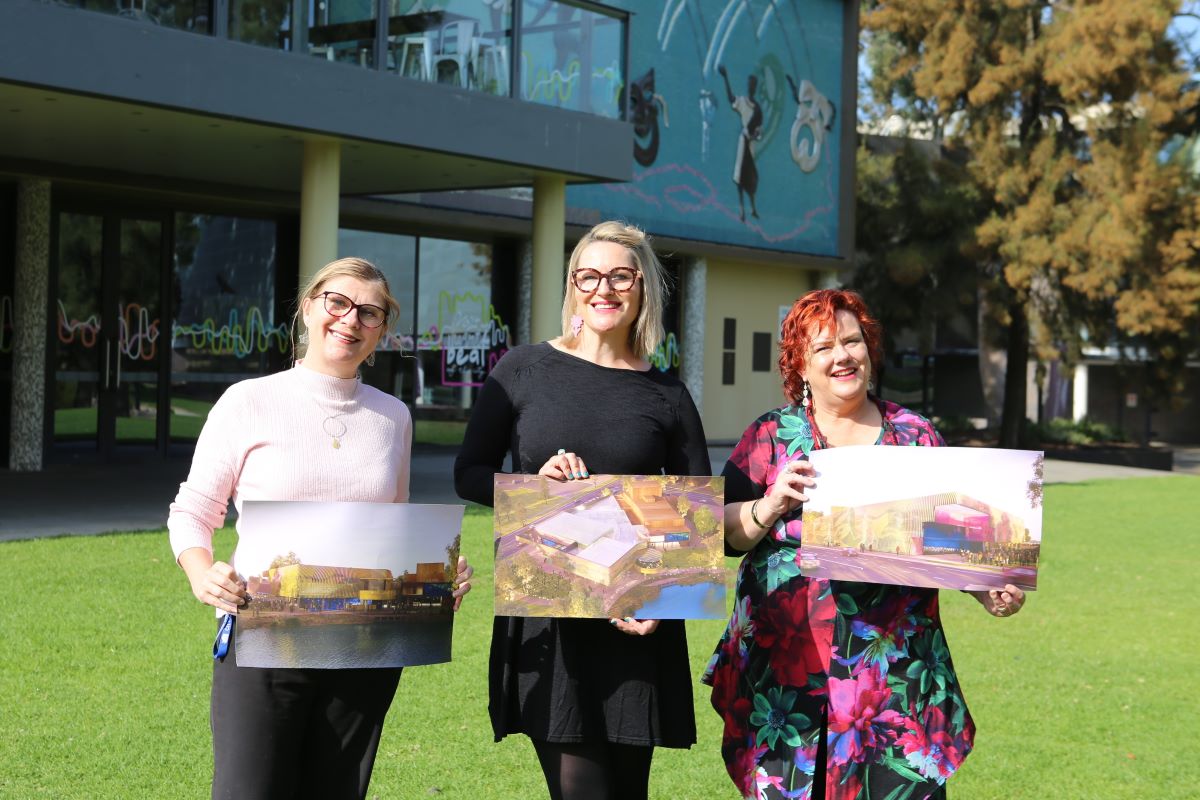Awarded annually, the Australian Museum Eureka Prizes are Australia’s most comprehensive national science awards, and honour excellence across the areas of research and innovation, leadership, science engagement, and school science.
This year’s finalists from the Faculties of Science, Medicine and Health and Engineering have been recognised for their contribution to scientific research and outstanding early-career research.
Faculty of Medicine and Health
Emerging Leader in Science: Dr Stephanie Partridge
Stephanie Partridge is an NHMRC/National Heart Foundation Early Career Research Fellow and an Accredited Practising Dietitian in the Engagement and Co-design Hub in the Charles Perkins Centre, and School of Health Sciences, University of Sydney.

Dr Stephanie Partridge (left) with research student.
Nine in ten Australian teenagers don’t eat a balanced diet.
Dr Stephanie Partridge’s research aims to address this by minimising the harm and harness the benefits of online technology.
Working with teenagers, Dr Partridge is conducting studies to understand how meal delivery apps affect how they access and consume food.
She is also developing preventative health programs using everyday technologies, like texting and apps to help young people live a healthy lifestyle
Using digital interventions, Dr Partridge aspires to transform the health of young people in this country.
Outstanding Early Career Researcher: Dr Tess Reynolds
Tess Reynolds is a Cancer Institute of NSW Early Career Fellow, a 2021 Eureka Prize Finalist (Outstanding Early Career Researcher) and the Thoracic Theme Lead at the ACRF Image X Institute.

Dr Tess Reynolds.
Cardiac motion is a major challenge for 3D imaging, resulting in blurred images that make it difficult to provide accurate treatment.
Dr Tess Reynolds’s ACROBEAT technology enables 3D imaging hardware to calculate heart movement and select the best time to acquire clear images.
It has the potential to transform 3D image guidance and change the way we treat cancer and cardiovascular disease.
The technology can be used to guide radiotherapy to organs impacted by cardiac motion and allows surgeons to scan patients mid-operation, to check that heart valves or pacemakers have been placed accurately.
Dr Reynolds’s research partnership with Siemens Healthcare, who provided specialised equipment to integrate ACROBEAT with the robot and x-ray imaging system, has the potential to transform 3D image guidance and change the way we treat cancer and cardiovascular disease.
Faculty of Science
Innovative use of technology: Professor Geordie Williamson
Geordie Williamson joined the Sydney University department in 2017
having completed his PhD in 2008 at the University of Freiburg. His
focus areas are algebra, geometry and representation theory.

Professor Geordie Williamson
As inaugural director of the University of Sydney’s Mathematical Research Institute, Professor Geordie Williamson is leading research collaborations between local and international mathematicians.
He has made fundamental contributions to Australia’s research capacity in pure mathematics, while his unique leadership vision is transforming the discipline and helping shape the mathematical tools of the future.
His work focusses on how AI and Machine Learning can be used by Mathematicians to help build conjectures, and create mathematical proofs for long-standing concepts.
Excellence in Interdisciplinary research: Professor Manfred Lenzen and Professor David Raubenheimer
Manfred Lenzen is Professor of Sustainability Research at Integrated Sustainability Analysis (ISA) in the School of Physics at the University of Sydney.

Professor David Raubenheimer and team
David Raubenheimer is Leonard P. Ullman Chair in Nutritional Ecology at the Charles Perkins Centre and School of LIfe and Environmental Sciences. His research focus is the development and use of approaches that model foods and diets as mixtures.
Professors’ Manfred Lenzen and David Raubenheimer have joined forces and put together ateam that have pioneered integrative methods to understand how dietary choices impact health, environment and economy simultaneously As a result, these issues are no longer restricted to separate research fields.
Uncovering two breakthrough findings, the team’s results indicate how our eating habits drive up carbon emissions through food transport, and how the nutrient composition of our diets affect the environment and economy.
This integration of data will support decision-making that addresses public health and environmental objectives holistically.
Faculty of Engineering
2022 ANSTO Prize for Innovative Use of Technology: Professor Julie Cairney
Julie Cairney is a Professor in the School of Aerospace, Mechanical and Mechatronic Engineering, the Pro-Vice-Chancellor (Research – Enterprise and Engagement) and the CEO of Microscopy Australia.

Professor Julie Cairney
Hydrogen atoms are light and mobile, making them difficult to image using current microscopy methods.
Materials engineer and scientist Professor Julie Cairney solved this challenge by building a new microscopy workflow to map the 3D position of hydrogen at an atomic scale.
She has used this new technique to better understand and prevent hydrogen embrittlement in steels – a major impediment to the transport of hydrogen as a clean fuel. This innovative use of technology will also be useful for hydrogen-related research across energy, transport and petrochemical industries.







